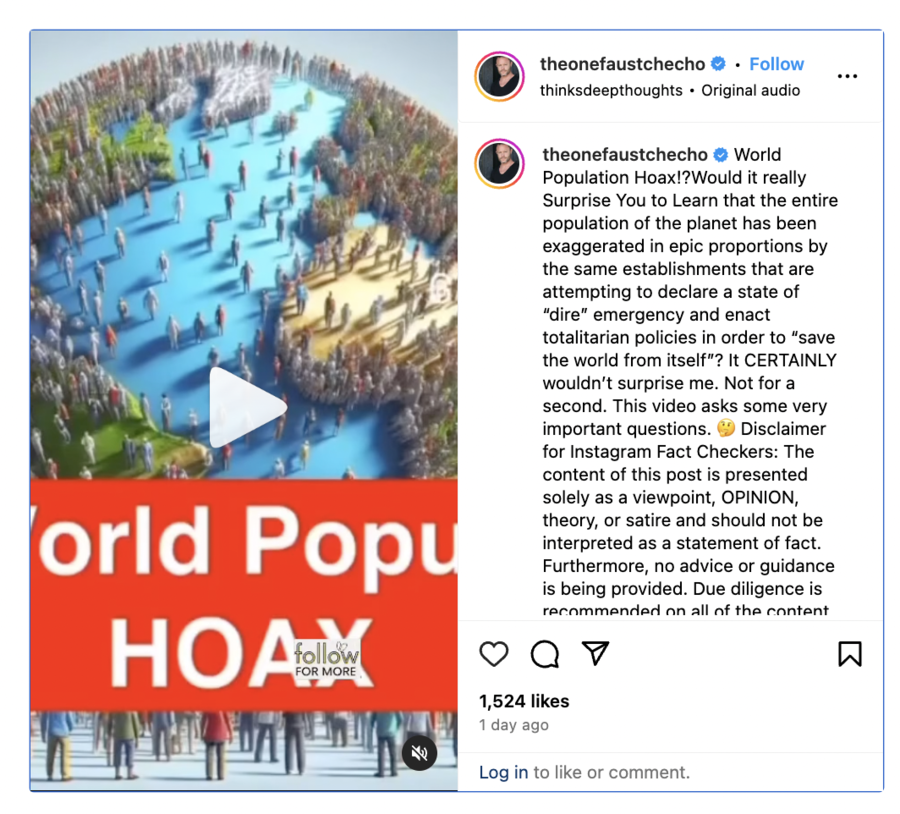
Do "practical calculations" prove that the United Nations grossly overestimates the size of the world's total population? No, that's not true: The claim derives from a flat-earther's speculations. They ignore the fact that people living in rural areas in India account for two-thirds of the country's overall population.
The claim appeared in a post (archived here) on Instagram on February 18, 2024. The video began:
The official numbers for world population released by the United Nations as of now have just surpassed 8 billion people living on Earth.
The voice-over continued:
For example, India supposedly has a countrywide population of well over 1.4 billion citizens. But when practical calculations are made, using the UN's own numbers, how they could possibly conclude such a high figure is clear as mud. Taking their official figures of populations from the largest 300 cities in India, from 12.4 million in the biggest city Mumbai to just over 100,000 in the 300th-place the city of Aurangabad and adding them all together, that barely accounts for 200 million of this supposed 1.4 billion. ... It is statistically and geographically impossible for there to be another seven times this number mysteriously hiding out in the remaining small towns and villages with populations all lower than 100,000.
This is what it looked like at the time of writing:
(Source: Instagram screenshot taken on Tue Feb 20 16:08:34 2024 UTC)
The video was originally published on YouTube on October 22, 2023, by a person named Eric Dubay, a known (archived here) conspiracy theorist and flat-earther.
His "practical calculations" omit the key facts about the population distribution in India.
India is a very vast country. With the area roughly equating to three Egypts, it is the world's eighth-largest (archived here).
Yet, only a third of its population (archived here) lives in urban areas. While uneven, the population growth is not limited (archived here) to a few of the largest metro areas, and the country's overall population density remains high, with 473 people per square kilometer (archived here). If this figure is multiplied by the country's area, the total exceeds the 1.4 billion calculated (archived here) by the UN in the spring of 2023.
Although the idea of a village is conventionally associated with a relatively small number of dwellings grouped together, some Indian villages can be quite large. For example, the village of Rarhi is home to over 36,000 people.
In 2019, IndiaSpend.com (archived here), a nonprofit newsroom focusing on data-driven reporting launched in 2011 by a former editor-in-chief of Bloomberg TV India, wrote (archived here) that at least 24,000 settlements in the country are more populous than towns. According to this article, it's, in part, a matter of classification: While a town should have 5,000 people at a minimum, in addition more than 75 percent of the male workforce should work jobs outside the agricultural sector. The latter is not the case for many localities. About 44 percent of all of India's workforce (archived here) still work in agriculture.
Other Lead Stories fact checks about the stories concerning international topics can be found here.















